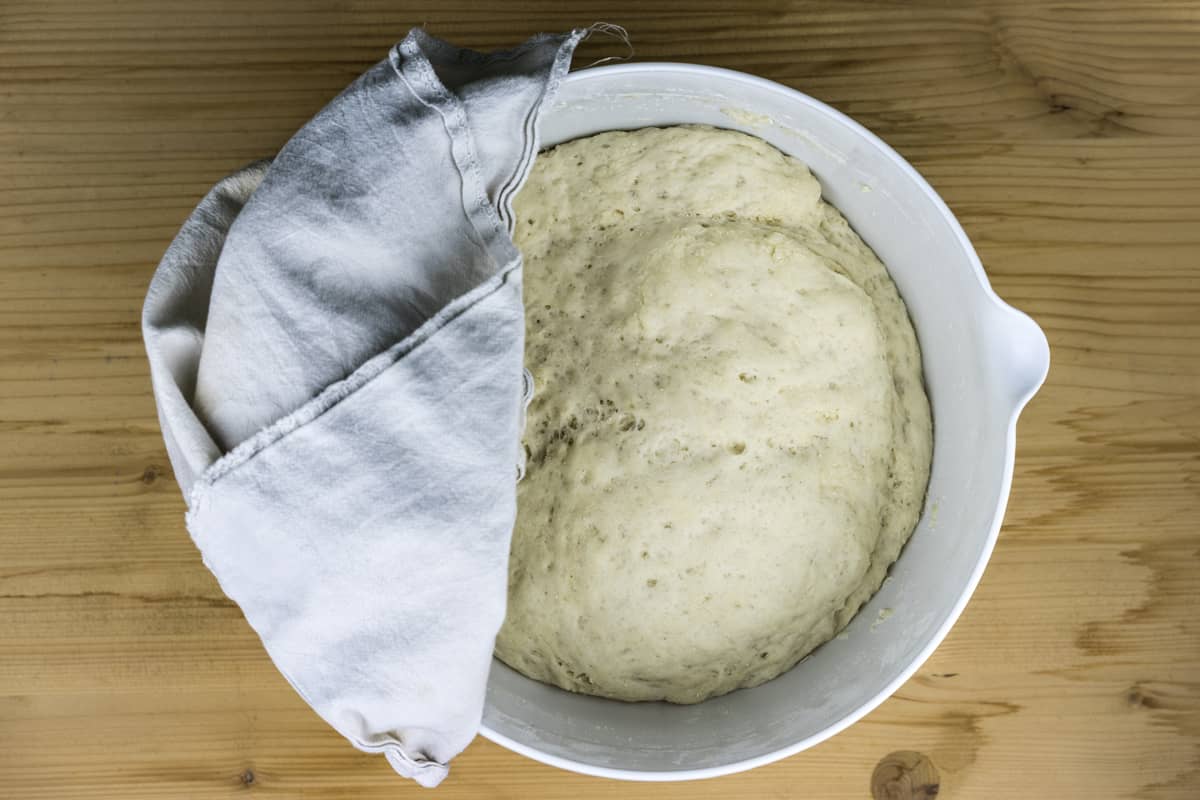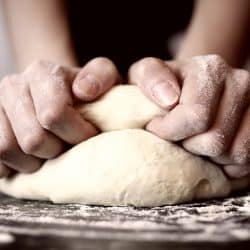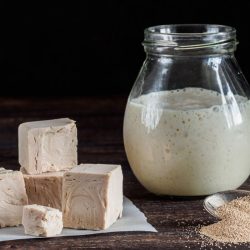Nothing smells quite as good as freshly-baked bread,. It's no wonder why we're all huge fans of making bread at home. The biggest issue people have with bread is trying to get the bread dough to rise. All the right conditions have to be met, including the right bowl type. Ever wondered if a plastic bowl is okay to use?
It's absolutely possible to have bread dough rise in a plastic bowl. In fact, many professional bakers use plastic bowls! When it comes to dough rising, the biggest issue is not heat retention, but size. You want to make sure that the bowl will be big enough to handle the expansion of the dough.
If you want your bread to turn out halfway decent, you need to make sure that the yeast in your dough is able to rise adequately. This guide will help you understand how to work with a plastic bowl and how to make the most of your time. Just keep reading.
![A pink plastic bowl with a fresh yeast dough slowly rising inside, Can Dough Rise In A Plastic Bowl? [And what to do if it doesn't]](https://kitchenseer.com/wp-content/uploads/2020/10/Can-Dough-Rise-In-A-Plastic-Bowl-And-what-to-do-if-it-doesnt.jpg)
Why Does Dough Rise In A Plastic Bowl?

As long as you have a bowl that is large enough to knead into and can be covered with a damp towel, you should be able to see some dough rise. This means that virtually any bowl can be adequately used to make your dough rise. To get the dough to be extra fluffy, you will need to have a little heat.
Glass, metal, and ceramic bowls are known for losing heat at a faster rate. Plastic, on the other hand, can retain heat better than a typical "rising" bowl can. This makes the dough rise faster and can also make it easier to knead. Thick-walled plastic bowls also help keep the temperature more even...a major perk for yeast cultures!
Is A Plastic Bowl Better Than Glass Or Metal?

This all depends on the baker's preference, but many people find that using plastic bowls is a better option than more traditional materials like glass or metal. The only time you should think twice about using plastic is if you need to place the bowl in an oven or on a hot surface, since plastic can melt.
It's important to note that they actually have special rising bowls made specifically for helping bread rise. They make great gifts, too. For more gift ideas, check out our article 33 Kitchen Gift Ideas For Moms Who Love To Cook!
Can You Use Your Mixing Bowl To Let Yeast Rise?
While it's not the best form to take, you can use a mixing bowl to let the yeast rise. To do this, we suggest cleaning the bowl and drying it first. Poorly-cleaned bowls can cause the consistency of your bread to suffer and may even impede the rising process.
What Type Of Bowl Is Best For Dough To Rise?
The type of bowl you choose can have a massive impact on the quality of your bread. You want to choose bowls that are large enough to fit the dough and also give you enough space to get your hands inside and knead.
We suggest getting a chef-style, stackable plastic bowl to keep your dough rising steadily. If you want to get a stackable style, then go for one that comes with a grooved, prefabricated lid. This bowl, for example, is a great example of what works best. If you've ever worked in a professional bakery, you probably have seen similar bowls in use on-premise.
Click here to get this lidded dough rising bowl on Amazon.
If you intend on placing your bread bowl in an oven, don't go with plastic. It's better to get a heat-proofed bowl that still comes with a lid, such as this glass number from Pyrex. Among many families, Pyrex is the traditional maker of mixing bowls and rising bowls due to their durability.
Click here to get this Pyrex bowl on Amazon.
If you're a fan of stainless steel and have been looking for a durable option, it's best to get a spacious bowl that also comes with a lid. This option below is a great example of what to look for. Better still, it's a stylish four-piece set that can also be used to mix salads, cake batter, or even pasta sauce.
Click here to get this stainless steel set on Amazon.
What To Do With Dough That Does Not Rise?
Sometimes, the recipe that you have had won't exactly work the way it's supposed to. If your yeast isn't rising, try the following tricks to make it act up:
Check The Ingredients
If the yeast, baking soda, or baking powder is old, it'll never rise. On a similar note, make sure that the water you used is the right temperature (between 105 and 115 degrees Fahrenheit) before you continue.
Try Kneading The Bread More
Sometimes, adding a little extra pressure will jumpstart the process. If your hands get tired in the process, try placing the bread dough in a KitchenAid.
Read more: How Long Do You Knead Bread Dough In A KitchenAid?
Check The Consistency Of Your Bread
If your bread is watery or excessively sticky, you will need to add extra flour in order for it to rise adequately.
Turn The Thermostat Up
Trying to make bread in a cold room will not work. The cold can kill yeast, making rising nearly impossible. If you haven't done so already, turn up your thermostat between 72 to 75 degrees Fahrenheit.
Buy New Yeast
Buy new yeast, activate it per the instructions on the packet, and add it to the bread. This will give you enough rising action to make your bread fluffy.
If All Else Fails
If all else fails, consider taking the dough out of the bowl, grabbing a rolling pin, and making crackers. It may not be the bread you wanted, but it'll still salvage the work you did.
Does Dough Need To Be Covered To Rise?
Dough absolutely needs to be covered in order to rise quickly and adequately. It's best to use a damp kitchen towel, a shower cap, or some plastic wrap. This gives your dough enough space to breathe but also locks in moisture. After all, no one likes to have excessively dry bread right out of the oven!
How Can You Tell If Your Dough Has Risen Enough?

This is tricky since each recipe will have a different waiting time. A simple "rule of thumb" is to take your thumb and gently press down on the dough. If the dough doesn't seal back up, then it's ready to bake. Another common rule used by bakers is to examine the size of the bread. Usually, leavened bread will double in size by the time it's done rising.
Some recipes will require as little as an hour of rising time before the dough is ready to bake. Others will take over 24 hours to work. If you aren't entirely sure if it's risen enough, try to compare your waiting time with the waiting time in the recipes. You can't speed this process up.
In Closing
Getting your bread dough to rise can be a pain, especially if you have conditions that are less than stellar. Thankfully, being stuck with plastic bowls doesn't mean you have to worry about your dough rising. On the contrary, it can be remarkably easy to get your dough to rise in a plastic bowl.
The best thing you can do when you're first setting forth on your baking journey is to stick to the recipe, use fresh ingredients, and invest in a rising bowl with a lid. You'll thank yourself later.






![Baker man hands breadmaking kneading bread dough, How Long To Knead Bread [By Hand And In A Mixer]](https://kitchenseer.com/wp-content/uploads/2021/03/Baker-man-hands-breadmaking-kneading-bread-dough-250x250.jpg)


